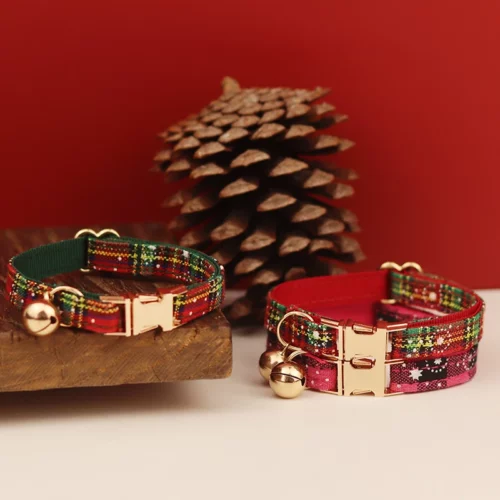How to Measure Your Dog’s Neck for a Collar

Measuring your dog’s neck for a collar is a straightforward process that ensures a perfect fit. A well-fitted collar is essential for your dog’s comfort and safety. Here’s how to do it:
Tools You’ll Need
- A soft measuring tape (or string, yarn, or ribbon)
- A ruler (if using string)
- A pen or marker (if using string)
Step-by-Step Guide
- Wrap the measuring tape or string around the base of your dog’s neck, where the collar will naturally sit. Make sure the tape is snug but not tight.
- If using string, mark the point where it overlaps and then measure the length with a ruler.
- Add 1 to 3 inches to this measurement to ensure the collar isn’t too tight.
Tips for Accurate Measurements
- Measure your dog’s neck twice to confirm accuracy.
- Ensure your dog is standing still and relaxed during the measurement.
- If your dog is still growing, consider a collar that allows for adjustment.
Common Mistakes to Avoid
- Measuring too loosely or tightly can lead to an incorrect size.
- Forgetting to add extra length for comfort.
- Not measuring at the right spot on the neck, which can affect the fit.
Dog Collar Size Charts

When it comes to finding the right collar for your furry friend, a dog collar size chart can be a lifesaver. These charts help you match your dog’s neck measurements to the appropriate collar size, ensuring a comfortable fit. Here’s a simple guide to help you understand the sizing better:
Dog Collar Size by Weight
Here’s a quick reference based on your dog’s weight:
| Weight Range | Collar Size |
|---|---|
| Up to 10 pounds | Extra-Small |
| 11-25 pounds | Small |
| 26-55 pounds | Medium |
| 56-80 pounds | Large |
Dog Breed Neck Size Guide
Different breeds can have varying neck sizes. For example:
- A Beagle might need a Medium collar.
- A Husky could fit into either Medium or Large, depending on their weight.
- Always check the specific size for your dog’s breed to ensure a good fit.
Bonus Tips for Choosing the Right Size
- Measure your dog’s neck accurately using a cloth tape or string.
- Add 2-3 inches to the measurement for comfort.
- Use the two-finger test to check if the collar is snug but not too tight.
How to Choose the Right Collar for Your Dog
Choosing the right collar for your dog is essential for their safety and comfort. A well-fitted collar not only looks good but also keeps your dog secure. Here are some key points to consider when selecting a collar:
Types of Dog Collars
- Flat Collars: Great for everyday use and identification.
- Martingale Collars: Ideal for training, as they tighten slightly to prevent slipping off.
- Harnesses: Best for dogs that pull, distributing pressure evenly across their body.
Key Features to Look for
- Adjustability: Ensure the collar can be adjusted for a snug fit.
- Material: Choose durable materials like nylon or leather that can withstand wear and tear.
- Safety Features: Look for quick-release buckles and reflective materials for visibility at night.

How to Test the Fit
- Use the ‘two-finger rule’: You should be able to fit two fingers comfortably between the collar and your dog’s neck.
- Check for movement: The collar should not slide over your dog’s head but should also not be too tight.
- Regularly check the fit: As your dog grows or gains weight, you may need to adjust or replace the collar.
By following these guidelines, you can ensure that your dog has a collar that fits well and meets their needs. Remember, this page provides a detailed guide on measuring your dog for the right harness size, so take the time to measure accurately and choose wisely!
Wrapping It Up
Choosing the right collar for your dog is important for their comfort and safety. Consider your dog’s size, breed, and activity level when selecting a collar. Make sure it fits well, allowing for two fingers to fit between the collar and your dog’s neck. For more tips and to find the perfect collar for your furry friend, visit our website today!









